Ancient Damascus: What We Might Lose Next
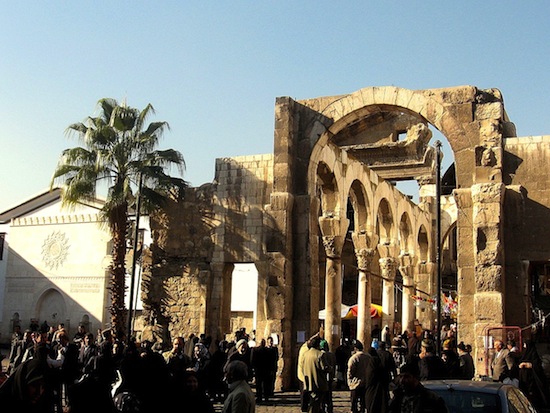
This week’s destruction of the temple of Bel in Palmyra, Syria, has brought the Islamic State’s brutality into the international spotlight once again, just like they wanted it to. I’m grateful that at least I got to see the place before it was destroyed. I’ve written about it in my post Memories of Palmyra before ISIS.
Palmyra isn’t just a unique archaeological site, it’s strategically important too. Located at a crossroads in eastern Syria, from there it’s possible for ISIS to supply all their operations in that sector, including their push for the Syrian capital of Damascus.
ISIS is already on the outskirts of Damascus and is renewing military operations there. If they take the city, many more antiquities would be in danger.
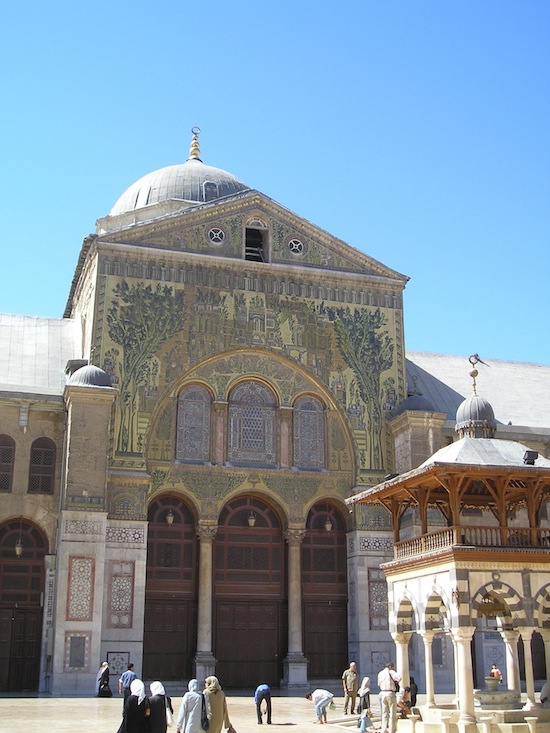
Damascus has been inhabited since at least 10,000 BC and has been a town since 3,000 BC, making it one of the oldest cities in the world. It was the capital of an Aramean kingdom in the 11th-7th centuries BC and continued as an important city for a number of different empires. The Romans left their mark with a city wall, some of it still standing, while portions of it were replaced in Ottoman times. Many of the city gates are Roman too.
The wall encircles the Old City, which retains its Roman street grid, along with numerous sites of cultural importance. The entire Old City is a UNESCO World Heritage Site.
I visited Syria in 1993 and 1994 and immediately felt at ease in Damascus. You could drink the tap water and walk the streets at night with no fear. People were open and welcoming and there was heaps to see.
One of my clearest memories is of visiting the famous Ummayid Mosque. The road leading to it passed through a Roman temple of Jupiter, many of its columns and arches still standing and adorned with images of the dictator Hafez Assad, the current dictator’s brutal father. This temple was founded during the reign of Augustus (27 BC- 14 AD) on the ruins of an Aramean temple and later became a Christan basilica dedicated to John the Baptist under the reign of the Emperor Theodosius (379-395 AD).
Passing through the shell of the temple, I entered the Al-Hamidiyah souk, one of the liveliest Arab markets I’ve seen. There’s been a market here since at least Roman times, although of course many of the goods have changed. I remember that just to the left of the temple entrance was a street dedicated to selling postcards. These weren’t just for tourists, there not being that many in the 90s, but also the Syrians. Schoolgirls snapped up cutesy drawings of cartoon figures and kittens, while their parents bought photos of their favorite music and movie stars. I got a handful of more predictable tourist cards, and rummaged through the back bins to pull out some antique postcards showing Damascus in the 1920s.
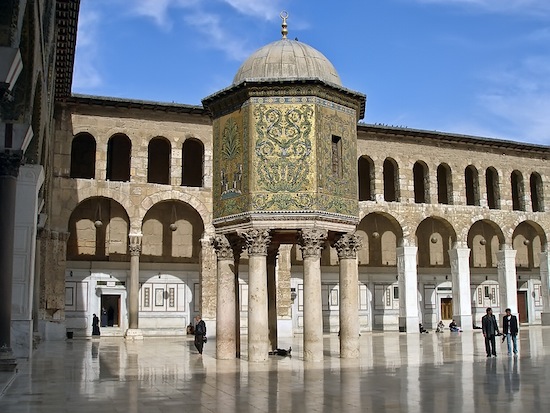
Beyond the temple stands the Ummayid Mosque, set around a vast courtyard. One of the largest and oldest mosques in the world, it was founded in 706 AD by al-Walid, the sixth Umayyad caliph (705-715 AD). Not only did the mosque incorporate part of the old Jupiter temple, but al-Walid brought in Byzantine mosaic experts to decorate it with images of landscapes, greenery, and Roman-style buildings. The mosque includes a shrine to John the Baptist, whom Muslims honor as a prophet. Jesus, also considered a prophet by Muslims, is supposed to appear here at the End of Days.
I don’t know what it’s like now, but back then a non-Muslim could walk into any mosque in Syria and be welcome. The shaded colonnade around the courtyard of the Ummayid Mosque made for a good place to rest, and I spent long hours chatting with people who, once they finished their prayers, came over to meet me. Most were men, but sometimes entire families showed up, the kids prodded forward to practice their English lessons. Mosques are designed to not only be places of prayer, but places where people can socialize. I was encouraged to do the second without ever being pressured to do the first.
Just next to the mosque, in a smoky little cafe next to some bookstalls, I came across a hakawati, a professional storyteller. Dressed in a spotless black djelaba and red fez, his stage was a chair set atop one of the tables. From there he told story after story long into the night. My basic Arabic didn’t give me much of the content, but I was moved along by the cadence and tone of that beautiful language. The crowd loved it too, sometimes completing his sentences or adding a comment of their own. They seemed to know all his stories, and didn’t mind hearing them again and again.
The Ummayid mosque and Jupiter’s temple wouldn’t be the only sites to be defaced if ISIS comes to town. Their iconoclasm extends to shrines of important Muslims, even those they respect. Shrines to holy men are found throughout the city, and in other captured cities these have faced destruction because ISIS thinks they smack of idolatry. They’d also target the burial place of Saladin. Despite his having defeated the Crusaders, his tomb wouldn’t be tolerated under an ISIS regime. They’d probably destroy it with a bit of extra glee since Saladin was a Kurd, and the Kurds have been kicking their butts in the north.
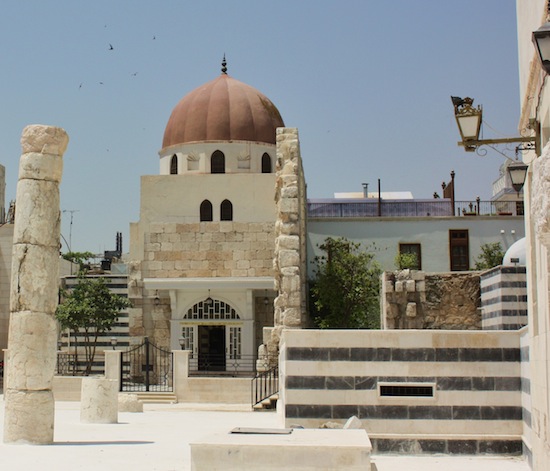
Then of course there are the modern institutions. Syria’s national museum would be looted, with any artifacts depicting people smashed and the rest sold on the international antiquities market to fuel the war effort. The national library would be plundered too.
Since I was an archaeologist at that time, I visited the national library to get a temporary reader card so I could access their archaeological journals and books. My research there led to one of my very first magazine articles, and also gave me an enduring memory of one of my worst cultural gaffes.
When I went in to apply for a reader card, the male clerk sent me upstairs to speak with the head librarian. Walking into the office, I saw a woman sitting behind a desk and a man standing next to her looking at some papers. Confused, I looked at the woman, then at the man, who nodded in her direction, indicating that she was the head librarian. I turned back to her just in time to see her frown replaced with a look of aloof professionalism.
Oops.
I’d been traveling in the Muslim world for several months and had become accustomed to seeing only men in positions of authority. This little incident taught me a lot about how social constructs affect perception and thinking. Luckily my next stop was Iran, where there are lots of woman in important positions (including a certain gun-toting bureaucrat in the Revolutionary Guard headquarters in Tehran, but that’s another story) and so I once again got accustomed to seeing women in charge.
With ISIS in town the library would be ransacked, all those archaeological manuscripts describing pagan civilizations would be burned for the sake of social purity. Hell, they might burn down the whole library except for the Korans. Might as well start fresh.
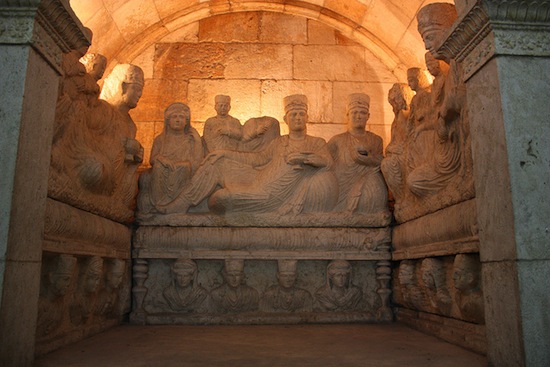
But let’s not forget the human toll if ISIS takes Damascus. That old hakawati has probably retired by now, but if he has a successor, he’ll be told not to tell his stories anymore and probably be flogged in the bargain. That female librarian will lose her job and ordered to hide her face. The postcard souk will be shut down, its vendors punished for selling images of human beings. The staff at the archaeology museum might even get beheaded, like the Syrian archaeologist who studied and preserved Palmyra for forty years.
Like in other parts of Syria and Iraq, the Islamic State doesn’t just go after the best monuments, it goes after the best people too.
Sean McLachlan is the author of the historical fantasy novel A Fine Likeness, set in Civil War Missouri, and several other titles, including his action series set in World War One, Trench Raiders. His historical fantasy novella The Quintessence of Absence, was published by Black Gate. Find out more about him on his blog and Amazon author’s page.
Photos courtesy the Wikimedia Commons unless otherwise noted. I didn’t have the time to scan my old instamatic shots, and to be honest I couldn’t bear looking at them.
It has happened throught time that some leader some religion decides that history shall begin with them and they move to make that a fact.
That is more or less why there’s no “Proof” of Atlantis and other so called lost civilizations. There have been several major purges of literature, most notably from the Library of Alexandria. Countless other cultures and times have murdered memory, the burning of the records in Aztec cultures, the purges in China.
There clearly was some basis for Atlantis, when the last Ice age ended water levels rose 300 meters almost overnight. Lots of areas now civilized were frozen or covered by glacier then. The movement and chaos destroyed much of the records. Remember the Tsunamis that got real big in Asia a few years back, like in 07? One of the reasons they had such a high body count was that the cities along the coast carried on miles into the sea – people knew they were fishing feet over walls and structures but thought they were just ancient docks and such. Instead the cities had continued out for miles and more. To top it off, the first cities as were planned. Most cities grow organically (Rome, London) then when they turn into empires they put out planned cities due to the congestion they dealt with back in the capital. If accepted history is to be believed we suddenly went from hunter gatherers to having full cities and agriculture, there’s no real missing link there, except after the first cities. So people went from hunting with a spear to having a planned out city, but then later generations were hunter/gatherers, built some huts and these later became large maze like cities?
Remember that place in Turkey? Can’t remember how to type the name here and using a tablet. That rivals stonehenge, but was deliberately buried around that time – perhaps to protect it from such barbarians as ISIS. (and an insult they got that ancient goddess’s name – good that they hate it)